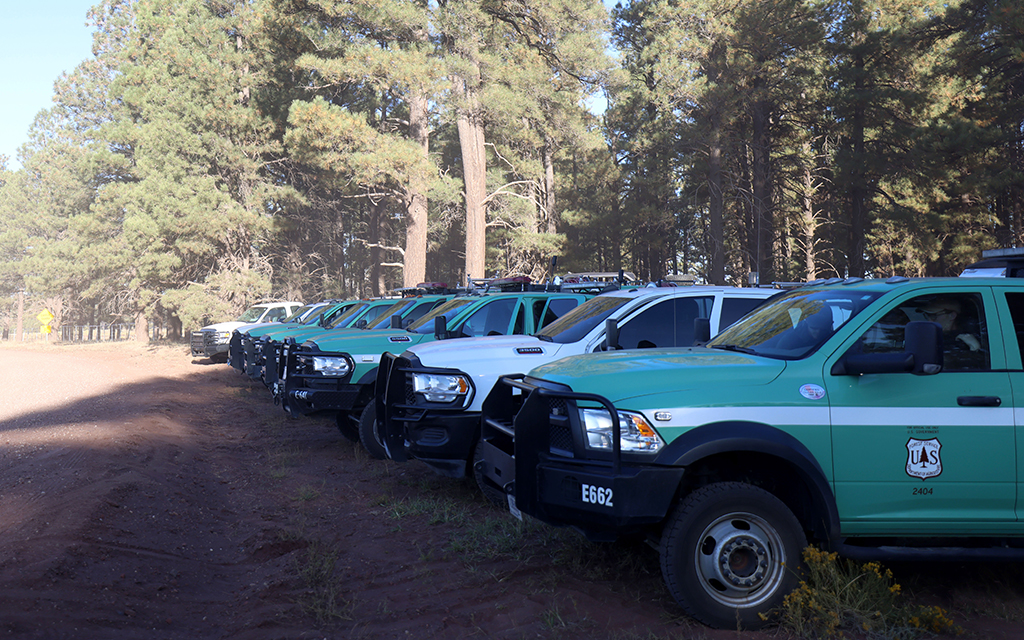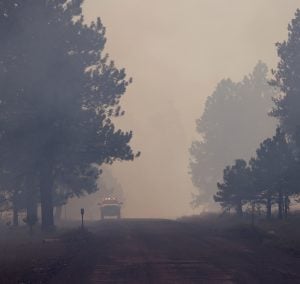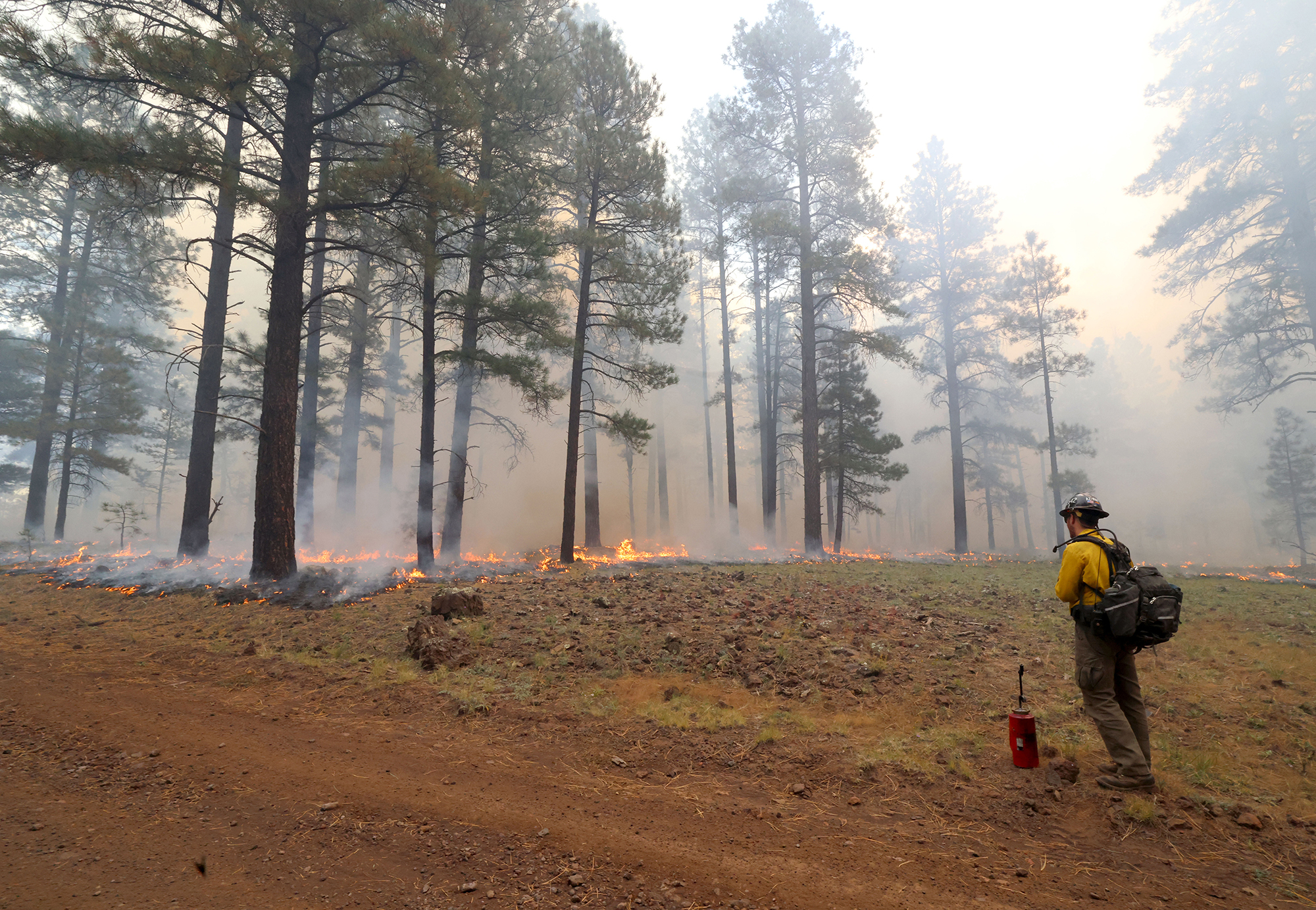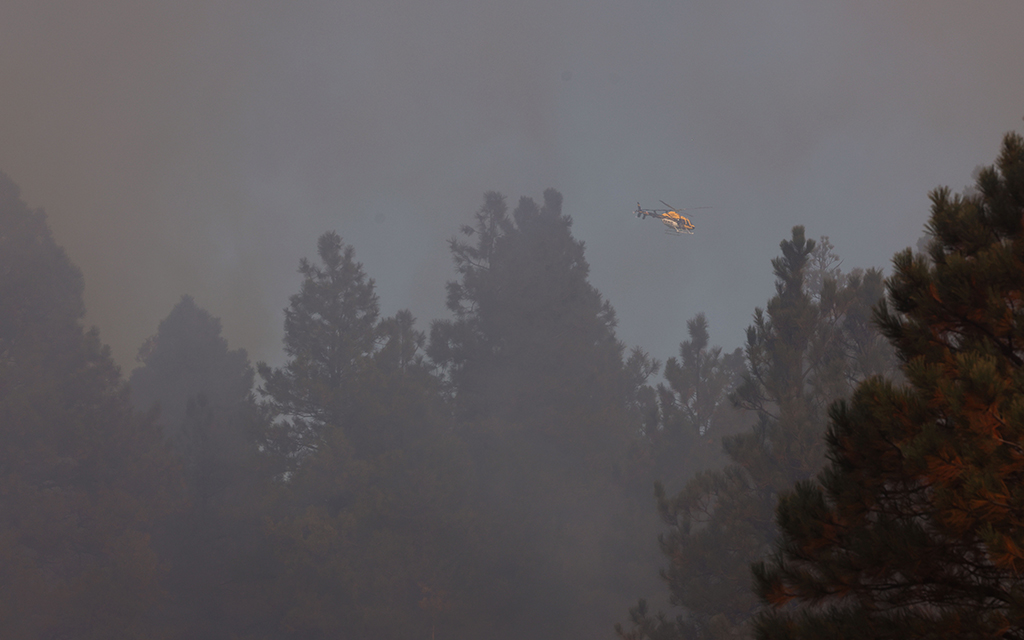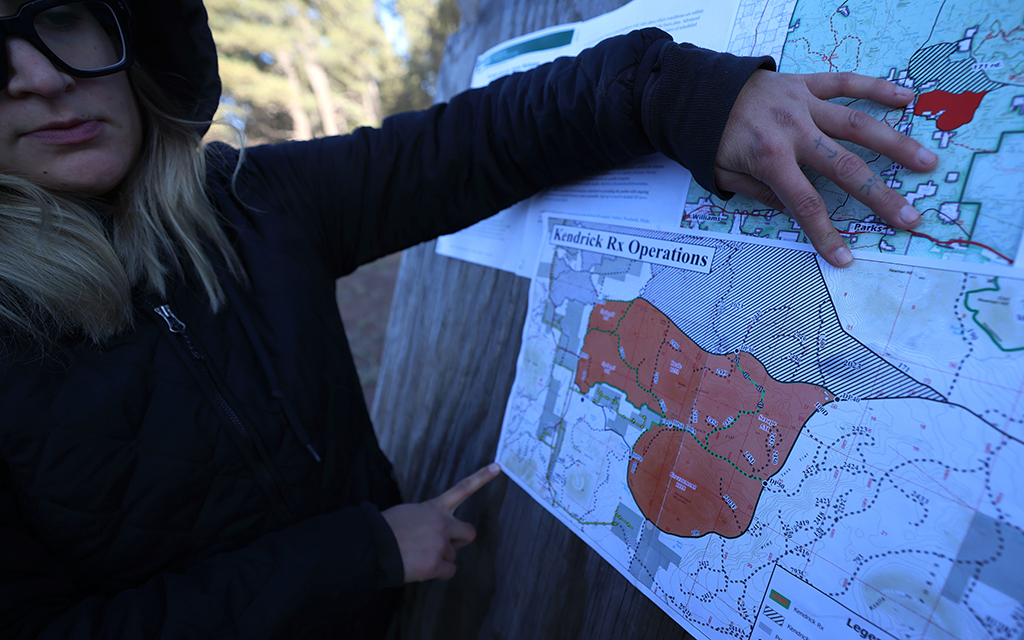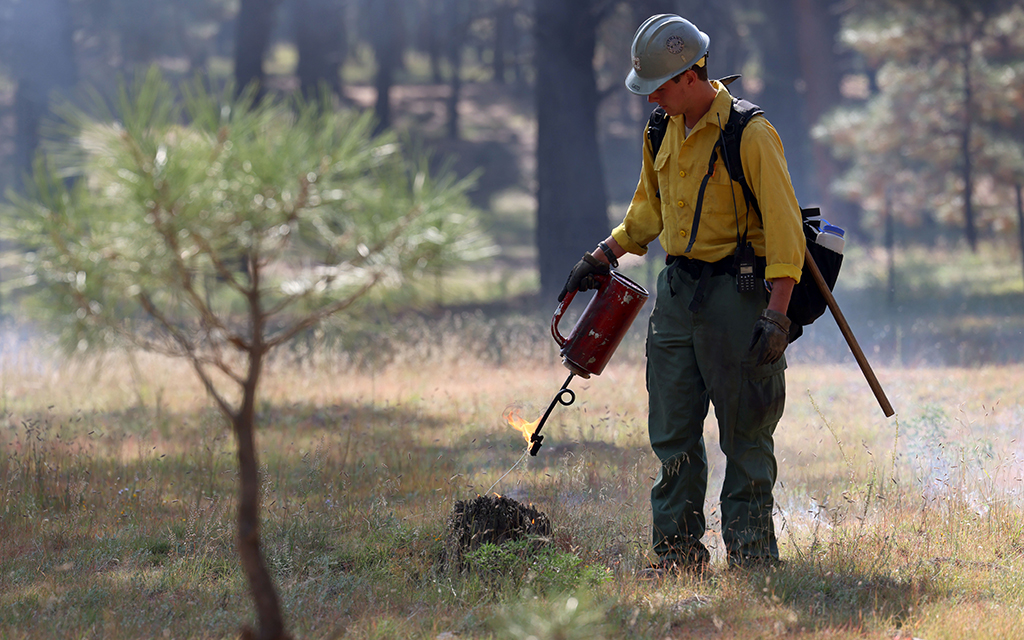Environmental benefits
The ponderosa pine forests in northern Arizona rely on regular fire exposure to encourage biodiversity.
“When you don’t have fires frequently, then the forests get very dense,” said Andrea Thode, a professor of fire ecology and fire science in the School of Forestry at Northern Arizona University. “The trees are very close together, they don’t grow in diameter and they don’t get a lot bigger.”
When there is an excess amount of trees, the amount of forest fuels on the ground increases, making it difficult for native plant species to flourish. Additionally, when the canopy of trees is thicker, less sunlight can reach the ground to encourage photosynthesis.
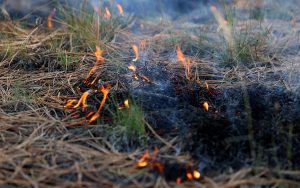
Fire consumes ground fuel at Kaibab National Forest on Oct. 5, 2023. Prescribed burns clear fuel and protect forests from extreme wildfires. Communities in the area are made aware of the burns. (Photo by Kevinjonah Paguio/Cronkite News)
Where plants struggle to grow, wildlife struggles to live. Species such as elk rely on the forbs, grasses and shrubs that grow in the ponderosa pine forests, but when forests are dense, they aren’t able to access their food supply.
Prescribed burns help manage forest density and burn off the build-up of fuels on the ground, allowing for more plants to grow. Additionally, when a prescribed fire burns through an area and blackens the trunks of trees, it leaves behind ash rich in minerals like phosphorus and nitrogen, Thode said. These minerals then soak into the soil on the ground and boost the plant growth.
Prescribed burns help ensure that these minerals can soak into the ground.
“At certain temperatures, nitrogen will volatilize, so it goes from that solid state to a gaseous state and is lost to the system,” Thode said, “but with low-severity fires, it’s released and so you do get an ash that has a lot of nitrogen and phosphorus in it.”
Thode said that even species that tend to prefer living in denser forest ecosystems benefit from prescribed burns. Mexican spotted owls, a threatened species that resides in northern Arizona forests, roosts in dense groups of trees but they require more open areas when hunting for food.
“Removing the more continuous fuels, making (forests) more heterogeneous landscapes, changes the way that fire can move through that landscape to protect those areas, even if they do need to be more dense where the owls are nesting,” Thode said.
Prescribed burns do produce smoke, which releases carbon into the atmosphere, but according to Thode, it’s much less intense and harmful than the smoke from a catastrophic wildfire.
“It’s not really if it’s going to burn,” Thode said. “It’s when it’s going to burn and how it’s going to burn.”


